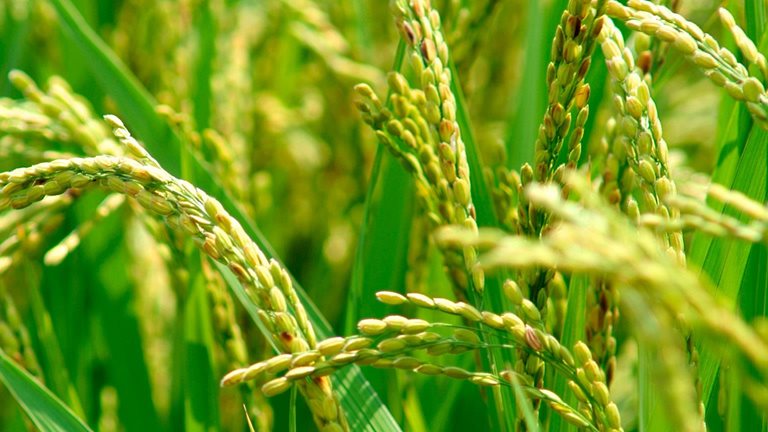Table of Contents
The Government of India Promotes Green Agriculture through Sustainable Practices
The government of India is actively promoting green agriculture by implementing sustainable and good agriculture practices with environmental concerns in mind. This article will explore the significance, features, objectives, effects, pros and cons, and a fun fact about these initiatives.
Significance of Green Agriculture
Climate change is a major global concern, and it has a profound influence on the agroecological conditions. Green agriculture aims to address these concerns by transforming India’s agriculture sector sustainably without compromising food security and farmers’ income.
Features of Green Agriculture Initiatives
The government of India has implemented several initiatives to promote green agriculture:
- National Mission for Sustainable Agriculture (NMSA): Aims to make Indian agriculture more resilient to climate change through various components like rainfed area development, on-farm water management, and soil health management.
- National Innovations in Climate Resilient Agriculture (NICRA): Focuses on developing and promoting climate-resilient technologies in agriculture to address extreme weather conditions.
- PM Programme for Restoration, Awareness, Nourishment, and Amelioration of Mother Earth (PM-PRANAM): Incentivizes states and union territories to promote the usage of alternative fertilizers and balanced use of chemical fertilizers.
Objectives of Green Agriculture
The objectives of green agriculture initiatives include:
- Boosting farmers’ income
- Strengthening natural/organic farming
- Rejuvenating soil productivity
- Ensuring food security
Effects of Green Agriculture Initiatives
The implementation of green agriculture initiatives has several positive effects:
- Increased adoption of organic and biofertilizers
- Improved soil fertility
- Reduced environmental pollution
- Enhanced agricultural output
Pros and Cons of Green Agriculture Initiatives
Pros:
- Promotion of sustainable farming practices
- Mitigation of negative environmental impacts
- Contribution to achieving Sustainable Development Goals
Cons:
- Possible challenges in implementation and adoption
- Transition period required for farmers to switch to sustainable practices
Fun Fact
India is one of the largest exporters of agricultural produce.
In conclusion, the government of India is actively promoting green agriculture through sustainable practices. These initiatives aim to transform the agriculture sector while considering environmental concerns. By incentivizing the usage of alternative fertilizers and promoting organic farming, India is moving towards a more sustainable and environmentally-friendly approach to agriculture.
Mutiple Choice Questions
1. What is the objective of the PM-PRANAM scheme?
a) To promote sustainable agriculture practices
b) To restore and nurture Mother Earth through biofertilizers
c) To incentivize states to reduce urea consumption
d) All of the above
Explanation: The objective of the PM-PRANAM scheme is to restore and nurture Mother Earth through the use of biofertilizers. It aims to promote the usage of alternative fertilizers and balanced use of chemical fertilizers, incentivizing the states to reduce urea consumption and promote sustainable agriculture practices.
2. Which government initiative aims to make Indian agriculture more resilient to the changing climate?
a) National Mission for Sustainable Agriculture (NMSA)
b) National Innovations in Climate Resilient Agriculture (NICRA)
c) Rainfed Area Development (RAD)
d) Mission Organic Value Chain Development in North Eastern Region (MOVCDNER)
Explanation: The initiative that aims to make Indian agriculture more resilient to the changing climate is the National Innovations in Climate Resilient Agriculture (NICRA). It focuses on developing and promoting climate-resilient technologies in agriculture to address vulnerable areas of the country and help cope with extreme weather conditions.
3. Which component under the National Mission for Sustainable Agriculture (NMSA) focuses on integrated farming systems?
a) Rainfed Area Development (RAD)
b) On Farm Water Management (OFWM)
c) Soil Health Management (SHM)
d) Mission Organic Value Chain Development in North Eastern Region (MOVCDNER)
Explanation: The component of the National Mission for Sustainable Agriculture (NMSA) that focuses on integrated farming systems is Rainfed Area Development (RAD). It aims to enhance productivity and minimize risks associated with climatic variability by integrating crops/cropping systems with activities like horticulture, livestock, fishery, agro-forestry, apiculture, etc.
4. Which initiative aims to strengthen natural/organic farming and rejuvenate soil productivity?
a) National Mission for Sustainable Agriculture (NMSA)
b) National Innovations in Climate Resilient Agriculture (NICRA)
c) PM Programme for Restoration, Awareness, Nourishment, and Amelioration of Mother Earth (PM-PRANAM)
d) Protected Area management
Explanation: The initiative that aims to strengthen natural/organic farming and rejuvenate soil productivity is the PM Programme for Restoration, Awareness, Nourishment, and Amelioration of Mother Earth (PM-PRANAM). It is part of the government’s efforts to promote green agriculture and incentivize the usage of alternative fertilizers.
5. What is the main thrust area covered under the NICRA project?
a) Developing climate-resilient livestock breeds
b) Identifying adaptation strategies for fisheries
c) Assessing climate change impacts on occupational health
d) Evolving crop varieties and management practices for adaptation and mitigation
Explanation: The main thrust area covered under the NICRA project is evolving crop varieties and management practices for adaptation and mitigation. It aims to develop and promote climate-resilient technologies in agriculture to address vulnerable areas of the country and cope with extreme weather conditions.
6. How will the PM-PRANAM scheme be financed?
a) Through savings of existing fertilizer subsidies
b) Through grants from international organizations
c) Through loans taken from national banks
d) Through crowdfunding initiatives
Explanation: The PM-PRANAM scheme will be financed through savings of existing fertilizer subsidies under schemes run by the Department of Fertilizers, Ministry of Chemicals and Fertilizers. The subsidy savings will be provided as grants to the states, which can be used for various purposes related to technological adoption of alternative fertilizers and reward and encouragement of farmers.
7. What are some major concerns arising out of past agricultural practices?
a) Loss of biodiversity and carbon footprint
b) Agricultural water use footprint and soil degradation
c) Nitrate and pesticide residue pollution and transport of agricultural produce
d) All of the above
Explanation: Some major concerns arising out of past agricultural practices include nitrate and pesticide residue pollution, loss of biodiversity, soil degradation, agricultural carbon footprint, transport of agricultural produce, and agricultural water use footprint. These concerns highlight the need for green agriculture and sustainable farming methods.
8. How do green agriculture-related initiatives align with the Sustainable Development Goals (SDGs)?
a) They align with SDG 2 (Zero Hunger) and SDG 5 (Gender equality)
b) They align with SDG 12 (Sustainable Consumption and Production) and SDG 13 (Climate Action)
c) They align with SDG 15 (Life on Land) and SDG 7 (Affordable and Clean Energy)
d) All of the above
Explanation: Green agriculture-related initiatives align with several Sustainable Development Goals (SDGs), including SDG 2 (Zero Hunger), SDG 5 (Gender equality), SDG 12 (Sustainable Consumption and Production), SDG 13 (Climate Action), and SDG 15 (Life on Land). They contribute to promoting sustainable farming practices, reducing environmental impact, and ensuring food security.
Overall Explanation: The given information highlights the government’s efforts to promote green agriculture through various initiatives and schemes. The PM-PRANAM scheme aims to restore and nurture Mother Earth through the use of biofertilizers, while the National Mission for Sustainable Agriculture (NMSA) and National Innovations in Climate Resilient Agriculture (NICRA) focus on making Indian agriculture more resilient to climate change. These initiatives align with the Sustainable Development Goals (SDGs) and promote sustainable farming methods.
Brief Summary | UPSC – IAS
The Indian government is promoting green agriculture and sustainable farming practices in order to address environmental concerns. They have implemented schemes such as the PM-PRANAM scheme, which incentivizes the use of biofertilizers to restore and nurture Mother Earth. Other initiatives include the National Mission for Sustainable Agriculture (NMSA) and the National Innovations in Climate Resilient Agriculture (NICRA) program. The government aims to integrate environmental concerns into agricultural policies and programs to mitigate negative impacts and enhance positive contributions. The promotion of organic and biofertilizers will lead to more fertile soil, reduced environmental pollution, and increased agricultural output.





